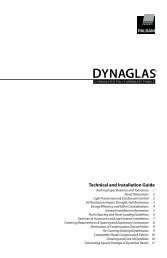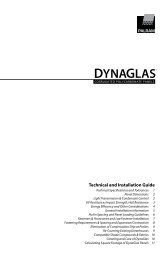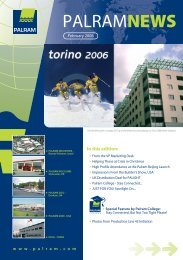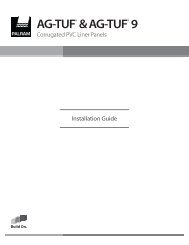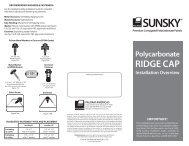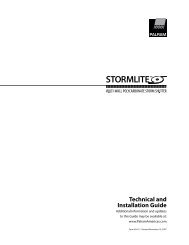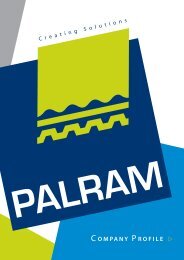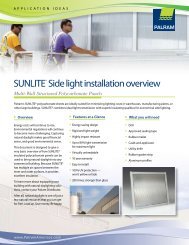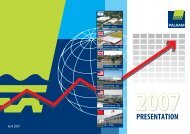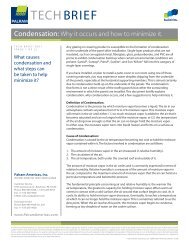PALSUN Technical Guide
PALSUN Technical Guide
PALSUN Technical Guide
You also want an ePaper? Increase the reach of your titles
YUMPU automatically turns print PDFs into web optimized ePapers that Google loves.
<strong>PALSUN</strong><strong>Technical</strong> ManualDie cutting presses are to be adjusted to cut completely through the sheet with a stroke stopping just beforedamaging the cutting rule.A make-ready procedure is used to shim the die areas that must be shimmed, to ensure that it cuts throughthe sheet uniformly. The press should have a softer steel cutting plate (30-35 Rockwell C) to prevent contactwith the press bed.The cutting surface is normally a 0.5 mm to 3.2 mm (0.02-0.13 in.) thick steel plate. Test the die to ensurefull, uniform cut through the sheet, by alternating with shimming of rule areas until a satisfactory cut is obtained.Cut in the same place each time and keep the cutting dies as sharp as possible.Figure 12: Diagram of steel rule die assembly.Apply PressureFigure 13: Diagram of shearing assembly.KnifeEdgeKnife EdgeHollow GroundApproximately 30˚Hollow GroundApproximately 30˚A die press must have adequate power to achieve the desired cut.4. Shearing & Punching Tips:a. Best results from these techniques are obtained by cutting a single sheet at a time. We recommend this.Cutting a batch of sheets may result in breakage and/or imprecise dimensions. Nevertheless, if one is committedto such a procedure, We recommend a few trial runs with small samples, and consultation with the shearingmachine manufacturer.b. A good indication for a quality cut is a trial cut of a regular 80 g paper page: If the outcome is a clean, straightcut, the actual result will be acceptable. If the cut paper is jagged, torn or crumpled- sharpen the blade and/oradjus the clearance and alignment.c. We recommend that sanding and polishing of the cut edges should be used as a regular practice. Neverleave on rough or jagged edged apertures as that may lead on to crazing and imminent failure.D. Cutting - Other Options:1. Laser Cutting:A Hi-Tech thermal technique reserved mainly for complex contours.A CO 2industrial laser can cut sheets up to 5 mm (0.2 in.) thickness.The cut can be done with or without masking, but often it needs pre-drying of the sheet in order to achievebubble-free cut edges. It can be used for cutting intricate holes and patterns cleanly and precisely.Holes and cuts produced by a laser have slightly tapered edges with a finished appearance.However, a laser cut in sheets thicker than 2 mm (0.08 in.) may result in scorch marks and discoloration(yellowing) of the cut edges. When a laser is used for cutting, careful consideration and treatment is requiredbefore and afterwards, to compensate for its inherent properties.Annealing is recommended after laser cuttings, to remove the internal stresses created by the thermal process.19



